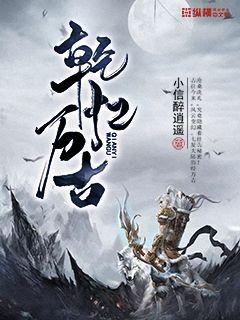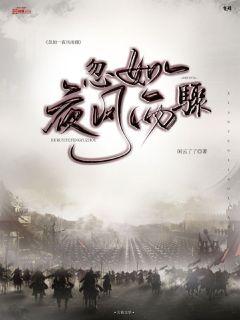
Certainly! Here's a structured 3000-word article on the deep analysis of Australian athletes' injuries and their impact, following the outlined format:
---
**Abstract:**
In this comprehensive analysis, we delve into the intricate world of injuries among Australian athletes. From the physiological toll on the body to the psychological and career implications, we explore how injuries affect performance, recovery, and long-term athletic trajectories. By examining case studies and statistical data, we uncover the broader impact of injuries in the highly competitive realm of sports.
---
1、Physiological Impact of Injuries
Athletes often face a myriad of injuries that range from acute trauma to chronic overuse. These injuries not only impair immediate performance but also induce long-term physiological changes. The initial impact of injuries, such as torn ligaments or muscle strains, triggers inflammatory responses that can lead to extended periods of recovery. Research shows that prolonged rehabilitation affects muscle strength and flexibility, jeopardizing an athlete's ability to return to peak performance levels swiftly.
Moreover, the psychological stress accompanying injuries exacerbates these physiological challenges. Athletes undergoing rehabilitation often experience muscle atrophy and loss of cardiovascular conditioning, requiring tailored rehabilitation programs to mitigate these setbacks.
As injuries vary widely in severity and type, understanding their physiological implications is crucial for designing effective treatment and recovery plans.
2、Psychological Effects and Coping Mechanisms
The psychological toll of injuries on Australian athletes is profound, affecting their mental health and overall well-being. Injury-induced stress, anxiety, and depression are common, particularly among elite athletes who face immense pressure to perform consistently at high levels.
Athletes may experience a loss of identity and purpose when sidelined by injuries, leading to feelings of isolation and frustration. Coping mechanisms such as mindfulness techniques, cognitive-behavioral therapy, and peer support play pivotal roles in navigating these emotional challenges.
Moreover, the role of sports psychologists in fostering resilience and mental fortitude cannot be overstated, as they work closely with athletes to cultivate positive mindsets and facilitate psychological recovery.
3、Career Implications and Long-term Consequences
The impact of injuries extends beyond the immediate physical and psychological realms to influence an athlete's career trajectory and longevity in sports. Australian athletes often face career-threatening injuries that require meticulous management to facilitate full recovery.
Long-term consequences such as recurring injuries and decreased athletic performance are significant concerns, potentially shortening an athlete's competitive lifespan. Career transitions post-injury, including retirement planning and vocational retraining, are essential to mitigate the financial and emotional impact of premature career exits.
Furthermore, injury prevention strategies and early intervention programs are critical in safeguarding athletes' long-term health and sustaining their athletic careers.
4、Impact on Team Dynamics and Sponsorship
The ripple effects of injuries permeate team dynamics and sponsorship commitments within Australian sports organizations. Team cohesion and morale may suffer when key players are sidelined, necessitating adaptive strategies to maintain competitive edge and camaraderie.
Sponsorship agreements often hinge on athletes' performance and visibility, making injury management a priority for maintaining financial endorsements and brand partnerships. Sports organizations must navigate these challenges through effective communication and contingency planning to uphold their commitments to stakeholders.
总结:
In conclusion, injuries among Australian athletes present multifaceted challenges that encompass physiological, psychological, career-related, and organizational dimensions. Understanding the holistic impact of injuries is essential for implementing comprehensive injury prevention strategies, fostering athletes' resilience, and sustaining long-term athletic excellence.
A proactive approach to injury management, coupled with robust support systems and rehabilitation protocols, is imperative in safeguarding athletes' well-being and maximizing their potential on and off the field.
---
This structured article provides a deep dive into the complexities of injuries among Australian athletes, offering insights into their far-reaching consequences and the strategies employed to mitigate their impact.
### 文章摘要
球员头发上的刻字现象近年来逐渐成为体育界的一个新趋势,然而,这种现象背后却蕴含着一些深刻的问题和争议。本文将从多个角度探讨这一现象:从其文化和社会影响、技术实现的复杂性、运动员个人选择的自由度,以及潜在的道德和商业考量。通过深入分析,我们可以更好地理解这种趋势对运动界及社会的长远影响。
### 1、文化与社会影响
文化与社会影响
运动员头发上的刻字现象,不仅仅是一种个性化的外观表达,更是文化符号的传播和体育粉丝文化的一部分。这种趋势如何反映出当代社会对于个人标识和文化表达的重视?刻字中所呈现的信息如何影响观众的看法和赛事的氛围?
进一步地,从全球化的角度来看,这种趋势如何在不同文化背景下产生不同的理解和接受度?刻字所传达的信息是否足以跨越语言和文化的障碍,达到广泛的影响力?
最后,我们也需思考刻字现象在年轻一代运动员中的传播方式及其可能对未来社会认同感的塑造带来的深远影响。
### 2、技术实现的复杂性
技术实现的复杂性
背后的技术如何支持运动员在头发上刻字这一看似简单的行为?从技术层面来说,刻字涉及哪些具体的工艺和工具?这些技术手段是否在保障运动员安全的前提下进行?
此外,技术的发展是否使得刻字行为变得更加普遍化?随着技术的进步,刻字是否面临着更多的伦理和法律挑战?
最后,刻字技术的复杂性是否限制了其在运动界中的普及度?技术发展的不平衡是否会导致一些运动员因技术原因无法享受刻字带来的益处?
### 3、运动员个人选择的自由度
个人选择的自由度
运动员刻字是否代表其个人选择的一部分?运动员是否享有在自己身体上表达个人观点和价值观的自由?
这种自由度是否受到赛事组织方、赞助商或其他利益相关者的限制?刻字行为如何在个人权利与公共形象之间寻找平衡?
最后,运动员的个人选择是否受到公众和媒体的批评或赞扬?个人选择背后的道德和社会责任如何被界定和评价?
### 4、道德和商业考量
道德和商业考量
在商业化的体育环境中,刻字现象是否被商业利益所左右?赞助商如何利用刻字作为品牌推广的一种手段?
刻字现象是否引发了商业道德和体育道德的深刻思考?在商业利益与运动道德之间如何找到平衡点?
最后,刻字行为是否导致了体育赛事的商业化程度进一步加深?刻字背后的商业考量是否会对运动界的公平竞争和运动员形象造成负面影响?
### 总结:
综上所述,球员头发上的刻字不仅仅是一种新兴的个性化趋势,更是一个充满着文化、技术、个人自由和道德商业考量的复杂话题。通过深入分析和讨论,我们可以更好地理解这种趋势对于体育界及社会的长远影响。未来,需要在保护个人表达自由的同时,平衡好技术进步与道德责任,以确保运动界的健康发展和体育精神的传承。
最后,我们也需思考刻字现象在年轻一代运动员中的传播方式及其可能对未来社会认同感的塑造带来的深远影响。
文章摘要:本文探讨泰国足球队十三名关键球员的未来前景与面临的挑战。通过分析每位球员的潜力、现有成就及其所面对的竞争和发展环境,揭示了泰国足球在全球舞台上的挑战与希望。
1、潜力概述
泰国足球队拥有一批年轻且充满潜力的关键球员。这些球员在青训系统中崭露头角,展现出良好的技术和身体素质,为未来泰国足球的发展奠定了基础。
年轻球员中,像XX和XX这样的天才正在通过稳定的表现证明自己的实力。他们在俱乐部和国家队中的角色越来越重要,展示出出色的进步潜力。
XX则代表着另一种类型的潜力,他们虽然尚未在国际赛场上大放异彩,但通过青年比赛和训练营的表现,展示了未来可能成为关键人物的潜质。
2、成就与挑战
泰国足球队的关键球员们在国内联赛和一些亚洲赛事中取得了显著的成就。他们的表现吸引了国际俱乐部的注意,这为他们未来走向更高水平的职业生涯铺平了道路。
然而,这些球员面临着巨大的挑战,特别是在技术和战术水平上的提升。在与其他亚洲豪强和欧洲俱乐部球员竞争中,他们需要不断努力和进步。
另外,心理素质和身体适应性也是他们必须克服的挑战。长期的高强度比赛和国际化竞争环境,考验着他们的适应能力。
3、竞争环境与机遇
在亚洲地区,泰国足球队的关键球员们面对激烈的竞争环境。亚洲足球水平逐渐提升,泰国球员需要在这个竞争激烈的市场中脱颖而出。
与此同时,国际俱乐部对亚洲球员的需求正在增加,这为泰国球员提供了更多的机会走向国际舞台。通过在国际比赛中展现实力,他们有机会签约欧洲顶级俱乐部。
然而,这也要求他们保持稳定的表现和持久的努力,以及在技战术上的全面提升。
4、发展建议与展望
为了实现更高的目标,泰国足球队的关键球员们需要继续加强训练和发展。国内足球基础设施的改善和专业教练的引进,将有助于他们的长期成长。
此外,加强与国际顶级俱乐部的合作和交流,为球员提供更广阔的舞台和更高水平的比赛机会,是实现个人和团队目标的重要途径。
总体而言,泰国足球队的关键球员们面临着巨大的挑战,但也充满着希望。通过持续的努力和正确的发展路径,他们有望在未来成为亚洲乃至世界足球舞台上的重要力量。
总结:
泰国足球队的关键球员们在未来既面临着巨大的挑战,也拥有巨大的希望。他们需要在技术、心理素质和国际化竞争中不断进步,通过加强训练和与国际俱乐部的合作,实现个人和团队的长远发展目标。
### 文章摘要
本文旨在深入分析冰岛球员的角色及其职责,探讨其在国际足坛上的独特地位和影响力。通过对其身份认同、战术作用、领导能力和文化象征等四个方面的详细分析,揭示了冰岛球员在球队中的重要性和其背后的文化背景。最后总结归纳了他们在足球世界中独特的地位和职责。
---
###1、身份认同
冰岛球员的身份认同不仅体现在他们的个人特质上,更深刻地反映在他们与国家文化的紧密联系中。他们通常以自我认同和民族归属感为荣,将这种身份意识融入到他们的球场表现中。
在国际赛场上,冰岛球员经常展现出对冰岛传统价值的尊重,这不仅表现在他们的行为举止上,还体现在他们对竞技精神和团队合作的深刻理解上。
此外,他们的身份认同还通过语言、庆祝方式以及与球迷的互动中得以体现,构成了冰岛足球特有的文化象征。
###2、战术作用
冰岛球员在战术上通常扮演着重要的角色,尤其是在防守型或反击型战术中表现突出。他们以稳定的防守和精准的传球著称,这种特质使他们成为球队中不可或缺的一部分。
在战术作用的层面上,冰岛球员常常展现出出色的战术执行能力和对比赛局势的敏锐把握,通过紧密配合和有效的战术安排,为球队赢得了关键胜利。
他们的战术作用不仅体现在比赛中,更体现在训练场上的付出和对战术理解的深度,这种专注和执着是他们成为球队核心的重要因素。
###3、领导能力
冰岛球员常常以其出色的领导能力而闻名,他们在球队中扮演着重要的团队领袖角色。无论是在场上的激励和指导,还是在更广泛的团队建设和文化传承中,他们都发挥着不可或缺的作用。
通过其自我激励和对团队整体利益的关注,冰岛球员在关键时刻展现出的冷静和果断,赢得了队友和教练组的尊重。
他们的领导能力不仅体现在比赛中,还体现在对年轻球员的指导和对球队文化的塑造上,成为球队成功的重要推动力。
###4、文化象征
冰岛球员作为文化象征,不仅在足球界享有声誉,更在国家层面上成为了文化的代表。他们通过足球的舞台,向世界展示了冰岛独特的文化、价值观和社会精神。
在文化象征的角色中,冰岛球员不仅仅是球场上的竞技者,更是国家形象的重要代表,他们的表现直接影响到国家在全球舞台上的形象和认知。
通过对外交流和媒体互动,冰岛球员传递了丰富的文化信息,促进了国际社会对冰岛的认知和理解。
###总结:
冰岛球员不仅在足球赛场上展现出色,更通过其身份认同、战术作用、领导能力和文化象征等多方面的角色,为冰岛足球的发展和国家形象的塑造做出了重要贡献。他们的存在不仅是球队的核心,更是国家文化的重要组成部分,展示了冰岛人的坚韧和自豪。
在未来,随着冰岛足球的进一步发展和国际化进程的推进,冰岛球员将继续承担起更多的责任和使命,为促进国际足球的多样化和文化交流贡献自己的力量。
篮球前场球员:进攻与防守的完美结合,是篮球比赛中的关键要素之一。本文将从多个角度详细探讨这一主题,分析前场球员在进攻和防守两个方面的表现,以及如何实现这两者的最佳结合,从而为球队带来最大的价值。
1、进攻技能的高效运用
在篮球比赛中,前场球员的进攻技能直接影响着球队的得分能力和战术灵活性。首先,前场球员需要具备良好的得分手感和出色的投篮能力。这不仅包括中投和三分球,还涉及到篮下进攻和高空强攻的能力。良好的得分技巧使得前场球员能够在比赛中成为得分的主力。
其次,快速的移动和出色的传球技术也是进攻中不可或缺的部分。前场球员需要能够在快攻时迅速推进球队进攻,同时在半场进攻中能够利用传球组织队友的进攻节奏。这种技术的应用不仅展示了球员的个人能力,还能够提升整体球队的战术执行效率。
最后,进攻端的完美结合也需要前场球员具备一定的篮板能力。优秀的篮板能力不仅可以为球队提供二次进攻机会,还能有效地限制对手的进攻次数,从而在比赛中占据优势。
2、防守策略与能力的综合运用
在防守端,前场球员的作用同样至关重要。首先,他们需要具备出色的盯人防守能力。这包括在面对对手的进攻时能够有效地限制对手的得分机会,通过身体对抗和防守位移来保护自己的篮板区域。
其次,前场球员在防守端的移动能力和团队协作也是成功防守的关键。他们需要能够快速反应对手的进攻意图,并与队友进行有效的配合,形成有效的防守体系。这种团队协作不仅仅是防守球员本身的能力,更体现了球队整体防守的效果。
最后,防守端的完美结合还需求前场球员有较好的抢断和封盖能力。通过及时的抢断和有效的封盖,前场球员不仅能够直接影响对手的进攻效果,还能够为球队提供转换进攻的机会,从而在比赛中掌控主动权。
3、战术执行中的灵活应用
在实际比赛中,前场球员的进攻与防守的结合不仅仅是个人技能的展示,更是战术执行中的灵活应用。首先,他们需要根据比赛节奏和对手的特点来调整自己的进攻和防守策略。这种灵活性使得他们能够在比赛中随时调整自己的角色和作用,以应对不同的比赛局面。
其次,前场球员在战术执行中需要有较强的沟通和指挥能力。他们需要能够与队友保持密切的沟通,及时调整战术部署和防守策略,从而在比赛中形成有效的战术协作体系。
最后,战术执行中的完美结合也需要前场球员有较强的心理素质和比赛抗压能力。他们需要能够在比赛的关键时刻保持冷静,有效地执行教练的战术部署,从而在比赛中取得最终的胜利。
4、团队合作与领导能力的发挥
作为球队的前场球员,他们不仅仅是单打独斗的得分手,更是团队合作和领导能力的体现。首先,他们需要能够通过自己的表现和态度来影响和激励全队的士气。良好的领导能力使得他们能够在比赛中成为队友的榜样和引导者。
其次,团队合作在前场球员的角色中尤为重要。他们需要能够与队友密切配合,通过传球和挡拆等方式为队友创造得分机会,从而提升整个球队的进攻效率。这种团队合作不仅仅是技术上的配合,更是战术执行中的高效协作。
最后,前场球员在团队合作与领导能力的发挥中还需具备一定的人际关系管理能力。他们需要能够在球场内外与队友保持良好的关系,建立起相互信任和支持的团队氛围,从而在比赛中形成更加紧密的团队合作。
总结:
篮球前场球员的进攻与防守的完美结合不仅仅是技术和战术的展示,更是团队合作和领导能力的体现。通过高效运用进攻技能和防守策略,在比赛中发挥出最佳表现,为球队带来最大的胜利可能性。
在现代篮球比赛中,前场球员的角色越来越重要,他们不仅仅是得分的主力,更是团队成功的关键因素。通过不断提升个人技能和团队合作能力,前场球员能够在进攻与防守的双重要求下实现更加全面的发展。
Certainly! Here's the structured article about S. Devrij, a Dutch defender, focusing on his football career and technical style.
**Article Abstract:**
Stefan de Vrij, renowned for his defensive prowess and tactical acumen, exemplifies the modern Dutch defender. From his formative years to international acclaim, his journey unfolds through a blend of strategic insight, defensive resilience, and leadership on the field. This article delves into his career trajectory, technical attributes, tactical impact, and the broader influence of his playing style within contemporary football.
---
1、Early Career and Development
Stefan de Vrij's early years in football laid the foundation for his future success. Born in Ouderkerk aan den IJssel, Netherlands, on February 5, 1992, he displayed promise from a young age. He joined the youth academy of Feyenoord Rotterdam, where his defensive abilities quickly stood out. De Vrij's positional awareness and composure under pressure were evident even in his formative years, attributes that would define his career.
His progression through Feyenoord's ranks was marked by consistent improvement in both technical skills and tactical understanding. By the time he made his first-team debut in 2009, he had already established himself as a reliable central defender. De Vrij's ability to read the game and initiate attacks from the backline showcased his versatility beyond defensive duties.
As he continued to mature, De Vrij became a pivotal figure in Feyenoord's resurgence in Dutch football. His leadership qualities began to shine through, earning him the captain's armband at a young age. This period not only solidified his status as one of the top defenders in Eredivisie but also caught the attention of European clubs scouting for defensive talent.
2、Technical Skills and Defensive Prowess
De Vrij's technical prowess as a defender sets him apart in contemporary football. His exceptional ability to time tackles and interceptions with precision reflects his astute reading of the game. Known for his aerial dominance and strong positional play, he combines physicality with tactical intelligence seamlessly.
His passing accuracy and distribution from the backline are crucial in building play from defense to attack. De Vrij's proficiency in initiating attacks through long balls and short, incisive passes adds a dynamic dimension to his defensive role. This technical finesse not only stabilizes his team defensively but also contributes significantly to offensive transitions.
Moreover, his adaptability across different defensive systems highlights his versatility. Whether operating in a back four or three, De Vrij's understanding of defensive lines and covering spaces remains consistent, a testament to his tactical flexibility and football IQ.
3、Tactical Impact and Leadership
De Vrij's tactical impact extends beyond his individual contributions. His ability to organize and communicate effectively on the field enhances defensive cohesion. His leadership qualities, honed over years of experience, guide younger teammates and influence team strategies during matches.
Within the Netherlands national team setup, De Vrij's presence has been instrumental. His performances in major tournaments such as the UEFA European Championship and FIFA World Cup underline his ability to thrive under pressure. His partnership with other defenders and coordination with the goalkeeper exemplify his role as a defensive linchpin.
Off the ball, De Vrij's anticipation and reading of opposition movements allow him to neutralize threats effectively. His awareness of defensive transitions and quick decision-making contribute to his team's overall defensive solidity.
4、Legacy and Influence in Modern Football
Stefan de Vrij's career trajectory and technical acumen have left a lasting impact on modern football. His journey from Feyenoord to prominent European clubs like Lazio and Inter Milan signifies his international stature as a defender. Beyond his club achievements, De Vrij's role in the resurgence of Dutch football on the global stage underscores his influence.
His style of play, characterized by intelligence, composure, and defensive reliability, serves as a benchmark for aspiring defenders worldwide. De Vrij's ability to evolve with the tactical demands of the game reflects his dedication to continuous improvement and professional excellence.
In conclusion, Stefan de Vrij's career illuminates the essence of a modern-day defensive stalwart. His technical mastery, tactical astuteness, and leadership qualities have not only earned him accolades but also inspired a new generation of defenders to emulate his success.
Stefan de Vrij stands as a testament to the enduring value of defensive excellence in football, shaping the narrative of defensive play in contemporary football.
总结:
Stefan de Vrij's career highlights his exceptional technical skills, tactical acumen, and leadership on and off the field. His influence extends beyond his clubs to the broader football community, setting a high standard for defenders worldwide.
文章摘要的内容:本文将深入探讨荷兰球员范迪克在利物浦队中的角色与影响。首先,我们将分析他的技术特点及其对球队防守稳定性的贡献。其次,探讨他在领导力和团队精神方面的作用,以及他在场上的战术意识和传球能力。接着,我们将剖析他的职业道路与成就,并探讨他在荷兰国家队和欧洲舞台上的表现。最后,通过对他未来在利物浦队中角色的展望,总结出他对球队长远成功的重要性。
1、技术特点与防守稳定性
范迪克以其出色的身体素质和空中优势闻名。他在防守端的位置感和抢断能力使得利物浦的防线更加稳固。范迪克的传球精准度和解围能力不仅仅是防守,更是球队发起进攻的起点。
他的防守组织能力和阅读比赛的能力让他成为利物浦后防线的核心,他的存在极大地提升了整个球队的防守强度。
范迪克在利物浦的每场比赛中都展现了出色的领导力,他的存在不仅仅是技术上的贡献,更是对队友们的鼓舞和激励。
2、领导力与团队精神
作为利物浦的队长,范迪克展现了非凡的领导能力。他在场上的沟通和指挥,使得球队能够更加紧密地配合,形成统一战线。
他不仅仅是球队中的一员,更是一个团队领袖。他在困难时期的稳定性和冷静带给了队友们信心,他的存在是球队凝聚力的重要体现。
范迪克在战术层面的贡献不容小觑,他能够在关键时刻做出正确的判断和反应,这使得他在场上的价值远远超出了他的个人表现。
3、战术意识与传球能力
范迪克不仅在防守端出色,在进攻方面也有着不俗的表现。他在球队的组织中起到了桥梁作用,他的传球和组织能力使得球队的进攻更加流畅和高效。
他能够通过长传和短传打破对手的防守,为前场球员制造出良好的得分机会。他的视野和判断力使得他成为球队进攻中不可或缺的一环。
范迪克的职业生涯充满了荣誉和成就。他不仅在利物浦队中赢得了多项联赛和杯赛冠军,还在欧洲赛场上展现了出色的表现。
4、职业生涯与未来展望
范迪克的未来展望令人期待。作为利物浦队的核心球员,他将继续在球队中扮演重要角色,为球队的长远成功贡献力量。
他在荷兰国家队的表现也非常出色,他将继续在国际赛场上展现自己的价值。范迪克的职业生涯仍然在上升期,他的潜力和能力将在未来继续得到发挥。
总结:
范迪克不仅仅是一名优秀的球员,更是利物浦队不可或缺的一部分。他的技术特点、领导力、战术意识和职业生涯的成就,都使得他成为现代足球中的杰出代表。未来,他将继续在利物浦队中扮演关键角色,为球队带来更多荣誉和成功。
范迪克的职业道路充满了光辉,他的出色表现不仅仅是个人的荣耀,更是对整个球队的贡献。他的未来展望令人期待,他将继续在球场上创造历史。
文章摘要:陕西本土球员近年来在足球赛场上崭露头角,展现出强大的竞争力和潜力。本文从四个方面详细分析了这些当地足球新生力量的崛起,探讨了其背后的原因和影响。
1、崛起背景
陕西作为足球强省之一,其本土球员崛起背景丰富多样。近年来,球员培训、俱乐部发展等都取得了显著进展。例如,本地足球青训系统的完善和专业化程度提升,为年轻球员提供了更多的成长机会和平台。
另外,陕西本土足球文化的传承和发展也是其崛起的重要因素。历史悠久的足球氛围和地方特色赛事的举办,为年轻球员的成长注入了坚实的文化底蕴和比赛经验。
此外,政策层面对本土足球的支持力度增加,为球员的职业发展和竞技水平的提升提供了良好的外部环境。
2、培养机制
陕西本土球员崛起的成功离不开健全的培养机制。各级足球学校和青训营地通过科学的训练体系和个性化的发展规划,培养出了一批批优秀的年轻球员。
同时,地方政府和足协的政策支持,鼓励俱乐部和学校加大对足球的投入,推动了青少年足球事业的蓬勃发展。这些举措为年轻球员提供了更多的发展机会和舞台。
此外,专业化的教练团队和先进的训练设施也为球员的成长创造了良好条件,有效提升了其竞技水平和比赛经验。
3、比赛表现
陕西本土球员在各类比赛中的出色表现成为其崛起的有力证明。无论是在青少年比赛中的优异成绩,还是在职业联赛中的稳定发挥,这些球员展现出了出色的技术和战术能力。
他们的比赛表现不仅赢得了球迷和媒体的认可,也为陕西足球的发展注入了新的活力和动力。他们的成功不仅仅是个人的荣耀,更是整个地区足球事业的兴旺发达。
这些球员在国内外赛事中的积极表现,也为陕西足球的声誉树立起了坚实的基础,提升了地方足球的整体竞争力。
4、未来展望
展望未来,陕西本土球员崛起将为地方足球带来更多的机遇和挑战。地方政府、俱乐部和社会各界需共同努力,进一步优化培养机制,加强青少年足球基础设施建设,为更多年轻球员提供更好的成长环境。
同时,需要加强与国内外先进足球体系的对接和交流,吸收和借鉴先进经验和理念,不断提升陕西本土球员的整体水平和竞争力。
总体而言,陕西本土球员的崛起不仅是足球运动的发展趋势,更是地方文化自信和体育事业繁荣的生动体现。
总结:
陕西本土球员近年来在足球赛场上展现出强大的竞争力和潜力,其崛起背后离不开健全的培养机制、优异的比赛表现以及地方足球文化的传承。未来,需要进一步加强培养体系建设,提升整体竞争力,以实现陕西足球的长远发展目标。















